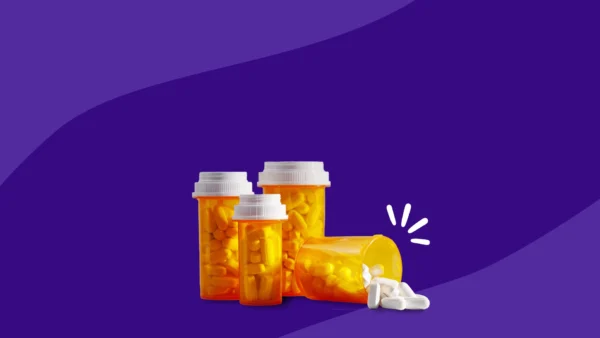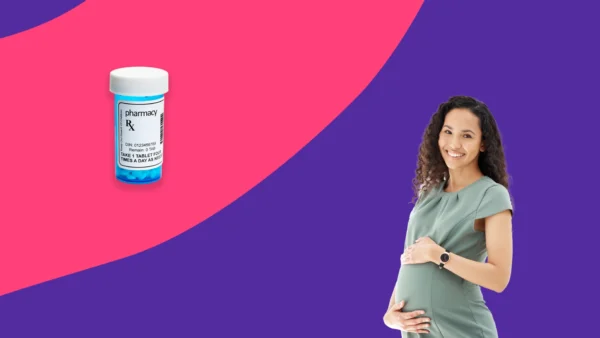Compare methocarbamol alternatives | Amrix or Fexmid | Skelaxin | Zanaflex | Orphenadrine | Lorzone | Natural alternatives | How to switch meds
Methocarbamol (brand name Robaxin) is a prescription medication used to treat muscle spasms and pain. This medication can be used for strains, sprains, and other muscle injuries. Methocarbamol belongs to a group of medications called muscle relaxants and works by slowing activity in the nervous system to allow the body to relax. Typically, methocarbamol is used alongside rest and physical therapy to help relieve discomfort. Methocarbamol is available as an oral tablet and an injection (under the care of a healthcare professional) for those unable to take medication by mouth.
RELATED: What is methocarbamol? | Methocarbamol coupons
While an effective treatment option for some people, methocarbamol may not be the best and safest option for all people treating muscle pain or spasms. Methocarbamol is typically dosed three to four times a day which may be inconvenient for some people. Additionally, some people may need to avoid the side effects of methocarbamol such as dizziness, drowsiness, blurred vision, or vertigo. Since methocarbamol slows activity in the nervous system, activities such as driving or operating machinery should be avoided or performed with caution. Methocarbamol should be used with caution in people who drink alcohol or use other medications that affect the nervous system such as barbiturates, benzodiazepines, opioids, and sleeping pills.
RELATED: Methocarbamol side effects and how to avoid them
What can I take in place of methocarbamol?
There are other options available to treat muscle spasms and pain that do not improve with methocarbamol. Systematic reviews and meta-analyses support using skeletal muscle relaxants for short-term relief of acute low back pain when nonsteroidal anti-inflammatory drugs (NSAIDs) or acetaminophen (Tylenol) are not effective or tolerated. Comparison studies have not shown one skeletal muscle relaxant to be better than another. Alternative medications include other types of muscle relaxants, benzodiazepines, acetaminophen, and NSAIDs. It’s important to know that some alternatives have abuse potential including Soma (carisoprodol) and benzodiazepines, such as Valium. For people unable to tolerate the common side effects of drowsiness and dizziness associated with muscle relaxants, NSAIDs and acetaminophen can be used for pain relief. These options may be more suitable for certain individuals due to their different uses, side effect profiles, and dosages.
RELATED: When to take muscle relaxers
Compare methocarbamol alternatives |
|||
|---|---|---|---|
| Drug name | Uses | Dosage | Savings options |
| Robaxin (methocarbamol) | Relief of discomfort associated with acute, painful musculoskeletal conditions | Take 1000 mg tablet by mouth four times daily | Methocarbamol coupons |
| Amrix and
Fexmid (cyclobenzaprine) |
Relief of muscle spasm associated with acute, painful musculoskeletal conditions | Take 5 to 10 mg tablet by mouth three times daily | Amrix coupons |
| Lorzone (chlorzoxazone) | Relief of discomfort associated with acute, painful musculoskeletal conditions | Take 250 to 500 mg tablet by mouth three to four times daily | Lorzone coupons |
| Orphenadrine | Relief of discomfort associated with acute painful musculoskeletal conditions | Take 100 mg tablet by mouth twice daily | Orphenadrine coupons |
| Skelaxin (metaxalone) | Relief of discomfort associated with acute, painful musculoskeletal conditions | Take 800 mg tablet by mouth three to four times daily | Metaxalone coupons |
| Soma (carisoprodol) | Relief of discomfort associated with acute, painful musculoskeletal conditions | Take 250 to 350 mg tablet by mouth three times daily and at bedtime | Soma coupons |
| Zanaflex (tizanidine) | Management of spasticity | Individualized dose taken by mouth every 6 to 8 hours as needed | Zanaflex coupons |
Other alternatives to methocarbamol
For people seeking other prescription options to treat muscle spasms and pain, there are several brand and generic medications.
Top 5 methocarbamol alternatives
The following are some of the most common alternatives to methocarbamol.
1. Amrix or Fexmid (cyclobenzaprine)
Amrix and Fexmid are the brand names of a medication called cyclobenzaprine. Like methocarbamol, cyclobenzaprine is a muscle relaxant used for muscle spasms and pain. Cyclobenzaprine is the most heavily studied muscle relaxer medication and has been shown to be effective for various musculoskeletal conditions. The sedative properties of cyclobenzaprine may benefit people with insomnia caused by severe muscle spasms. Additionally, people with low back pain or fibromyalgia may benefit from treatment with cyclobenzaprine. This alternative should not be used in people with hyperthyroidism, heart problems, or liver disease. Cyclobenzaprine is available as both an immediate-release tablet and extended-release (ER) capsule. The ER capsule may be more convenient for people as it is only taken once a day.
2. Skelaxin (metaxalone)
Skelaxin is a brand name medication that is available as a generic drug called metaxalone. Like methocarbamol, metaxalone is a muscle relaxant used for muscle spasms and pain. While metaxalone has limited clinical trials evidence, it could be an alternative for people seeking a muscle relaxer that won’t make them as tired. While muscle relaxers cause sedation, metaxalone has less dizziness and drowsiness than other skeletal muscle relaxants. This alternative should not be used in people with a known tendency to become anemic, or who have kidney or liver disease.
3. Zanaflex (tizanidine)
Zanaflex is a brand name medication that is available as a generic drug called tizanidine. This medication is FDA (Food and Drug Administration) approved to manage spasticity, a condition in which muscles stiffen or tighten, preventing normal fluid movement. This alternative may be used in people with brain injury, spinal cord injury, cerebral palsy or multiple sclerosis as these conditions can have varying degrees of spasticity. Tizanidine is also used off-label for musculoskeletal pain. Additionally, the sedative effects of tizanidine may benefit patients with insomnia caused by severe muscle spasms. Tizanidine must be avoided if also taking the medications fluvoxamine or ciprofloxacin due to dangerous drug interactions.
4. Orphenadrine
Orphenadrine is a generic muscle relaxant that is also used for relief of discomfort associated with acute painful musculoskeletal conditions. Orphenadrine is available as an extended-release tablet that may be more convenient for people as it is only taken twice a day. Due to serious side effects including constipation, urinary retention, and confusion, use in the elderly is generally not recommended. This medication should be avoided in people with glaucoma, certain types of ulcers, or myasthenia gravis.
5. Lorzone (chlorzoxazone)
Lorzone is a brand name muscle relaxant that is available as a generic called chlorzoxazone. Lorzone is also used for relief of discomfort associated with acute, painful musculoskeletal conditions. This medication should be used with caution in people with liver disease. Like methocarbamol, chlorzoxazone is taken three to four times daily.
RELATED: What is the best muscle relaxer?
Natural alternatives to methocarbamol
There are several alternative treatment options for people using muscle relaxants. Some alternative medicine includes acupuncture, chiropractic adjustments, physical therapy, and massage therapy. It is important to seek out medical advice from trusted healthcare professionals before starting any alternative treatment to avoid worsening strains, sprains, and other muscle injuries.
Physical therapy can be useful for chronic or acute pain management after injuries or surgeries. Physical therapy can help improve strength, flexibility, endurance, power, and agility, all of which help the body function better and process pain more efficiently. Many people notice an improved quality of life after regular physical therapy sessions. Physical therapists can design specific therapeutic exercise plans for a variety of medical conditions, ranging from stroke and head/spine injuries to work/sports injuries.
Acupuncture is a common alternative medicine where a professional inserts thin needles into the skin to stimulate nerves and muscles. Pain is one of the most common reasons for people to seek acupuncture treatment. Multiple studies have shown the effectiveness in the treatment of back pain, either acute or chronic, knee pain secondary to osteoarthritis, myofascial pain, and headaches. The American College of Physicians recommends acupuncture as a first-line, non-pharmacological treatment for patients suffering from chronic low back pain.
How to switch to a methocarbamol alternative
1. Discuss all health conditions with a healthcare provider
Before switching from methocarbamol to an alternative, it’s important the prescribing doctor has reviewed all health conditions. Some alternatives should be avoided in people with kidney disease, certain heart conditions, or liver disease. Alternatives Valium (diazepam) and Soma (carisoprodol) should be avoided in people with a history of medication abuse. It’s best to seek medical advice prior to changing medication therapy.
2. Do not suddenly stop taking methocarbamol
While methocarbamol has no evidence of withdrawal symptoms, always consult with the prescribing doctor before stopping the medication. A gradual transition is advised when stopping methocarbamol treatment to avoid more severe adverse effects.
3. Continue to use caution with alcohol and other CNS (central nervous system) depressants
Muscle relaxants slow activity in the nervous system. Methocarbamol and its alternatives, including other muscle relaxants and benzodiazepines, should be used with caution in people who drink alcohol or use other CNS depressants that affect the nervous system. These medications include other benzodiazepines, barbiturates, opioids, and sleeping pills. Additionally, activities such as driving or operating machinery should be avoided or performed with caution.
RELATED: 10 drugs you should not mix with alcohol
4. Consider OTC pain relievers for pain
Muscle relaxants have sedating side effects that may be difficult for some people to tolerate, especially older adults. Over-the-counter (OTC) pain medications nonsteroidal anti-inflammatory drugs (NSAIDs) and acetaminophen (Tylenol) are effective options for people with pain. NSAIDs include generic ibuprofen, Advil, Aleve, and Motrin.











